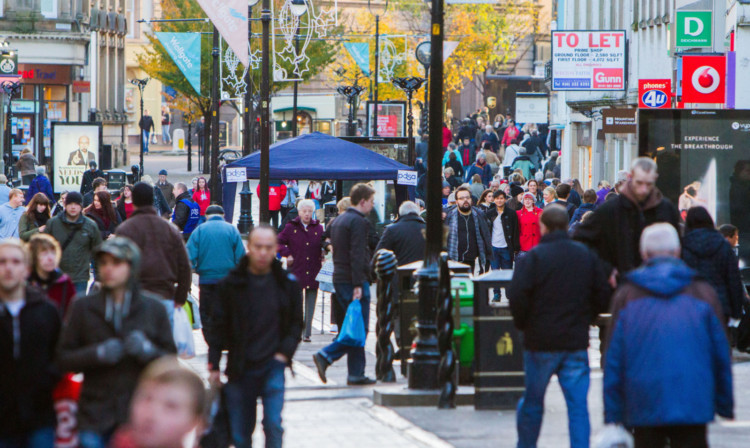Scotland’s population will increase by nearly 500,000 to 5.78 million within 25 years thanks to the arrival of hundreds of thousands of new migrants.
A new report published by the National Records of Scotland claims the population will increase to 5.52 million by 2022 and continue rising to 5.78 million 15 years after an increase of 9% on the population level.
The population rise will largely be driven by inward migration, which will account for 72% of the projected increase. The remainder will be a result of Scotland having a higher birth than death rate.
Registrar General and NRS chief executive Tim Ellis said: “The latest population projections indicate Scotland’s population will be reaching record levels for years to come.
“Scotland’s population is projected to continue to rise into the future because Scotland’s birth rate and inward migration levels have remained high by historic standards and because people at older ages are expected to live longer.”
The report provides projections for the period 2012-2037. They show what happens under certain assumptions about future fertility, mortality and migration.
The assumptions are based largely on past trends and although they will reflect past policy and economic impacts, they do not take account of future changes which may occur as a result of policy initiatives.
However, the report also shows Scotland’s population is ageing rapidly.
The number of people aged 75 and over is expected to increase by around 28% in the next 10 years, reaching 0.53 million by 2022, while the number of people of pensionable age is projected to reach 1.34 million in 2034.
The number of people of working age is projected to increase from 3.35 million in 2012 to 3.51 million in 2022, an increase of 5%.
However, the projected working age population then decreases to 3.48 million by 2037.
Culture Secretary Fiona Hyslop, whose brief includes national records, said: “Scotland is more multicultural than ever before, with an increase of three percentage points in the number of people living in Scotland who were born outside the UK.
“This publication shows Scotland’s population is projected to increase by 470,000 people over the next 25 years.
“I am pleased to see 81% of this increase is attributed to continuing inward net migration.”
The populations of the other countries in the UK are also projected to increase. England’s population is projected to increase by 16%, Northern Ireland’s by 10% and Wales’ by 8% between 2012 and 2037.
